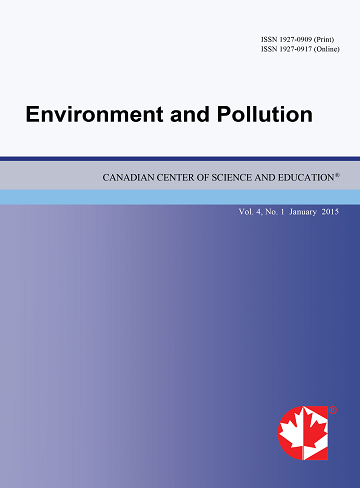Potential Effects of Environmental Change on Mining Wastes in a Hyperarid Climate
- Douglas Sims
- Peter Hooda
- Gavin Gillmore
Abstract
Three desert washes were sampled to evaluate the transport of contaminated sediments from abandoned mining sites to downwash environments. The area of concern is an extreme arid climate considered stable and not to pose pathways for contaminated sediments to impact downwash environments. Research of mine wastes in Nelson, Nevada has shown that residual geogenic and anthropogenic trace elements have been mobilized in surface sediments as a result of storm event. Cyanide and trace elements, especially mercury and lead, have transported to 6000 m downwash from source areas. Short term environmental impacts appear to be minimal because of present-day environmental conditions. However, climate shifts caused by the El Nino Southern Oscillations or even a dramatic climate shift might increase regional precipitation promoting a more rapid erosion of contaminated sediment. Currently, wash sediments do not contain levels of CN- or trace elements that pose threats to the environment; however, if erosion and transport of mining waste increased because of additional precipitation, then CN- and trace elements loading in storm water would increase, with their possibly delivery to Lake Mohave.
- Full Text:
 PDF
PDF
- DOI:10.5539/ep.v1n2p61
Journal Metrics
Index
- Academic Journals Database
- Berkeley Library
- CAB Abstracts
- CAS (American Chemical Society)
- CNKI Scholar
- COPAC
- CrossRef
- DTU Library
- Elektronische Zeitschriftenbibliothek (EZB)
- EuroPub Database
- Excellence in Research for Australia (ERA)
- Genamics JournalSeek
- Google Scholar
- Harvard Library
- Infotrieve
- Jisc Library Hub Discover
- JournalGuide
- JournalTOCs
- LOCKSS
- Max Planck Institutes
- Mir@bel
- PKP Open Archives Harvester
- Pollution Abstracts
- Publons
- Pubmed journal list
- ROAD
- Scilit
- SHERPA/RoMEO
- Standard Periodical Directory
- Stanford Libraries
- UCR Library
- Ulrich's
- UniCat
- Universe Digital Library
- UoS Library
- WorldCat
- Zeitschriften Daten Bank (ZDB)
Contact
- Albert JohnEditorial Assistant
- ep@ccsenet.org
